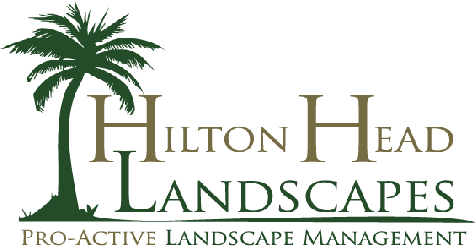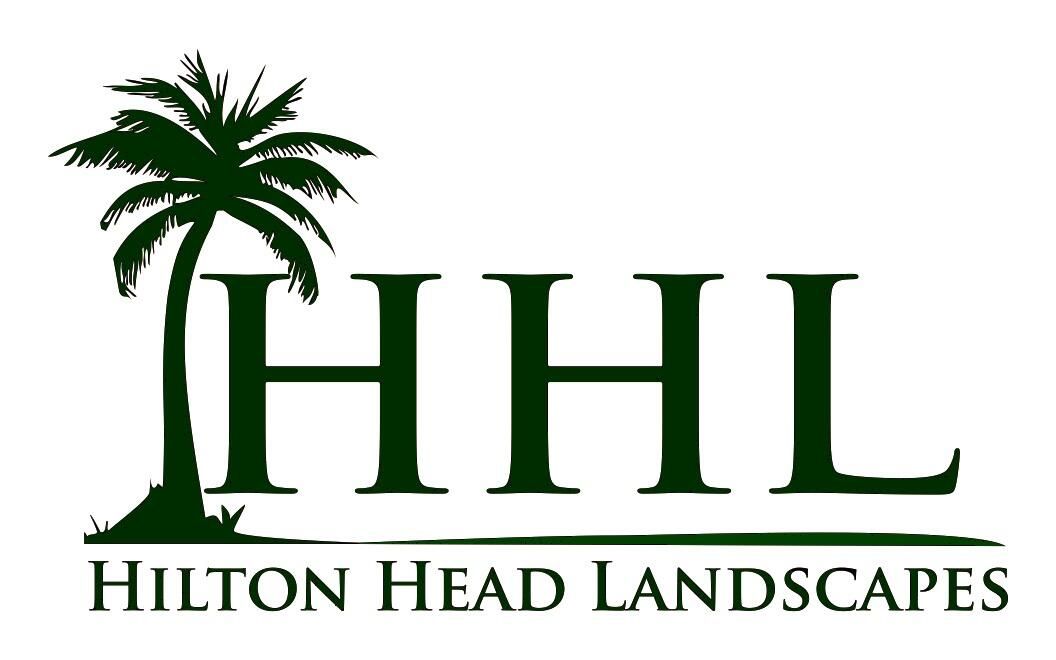Native Plant Landscaping: Bringing Hilton Head's Natural Beauty to Your Yard
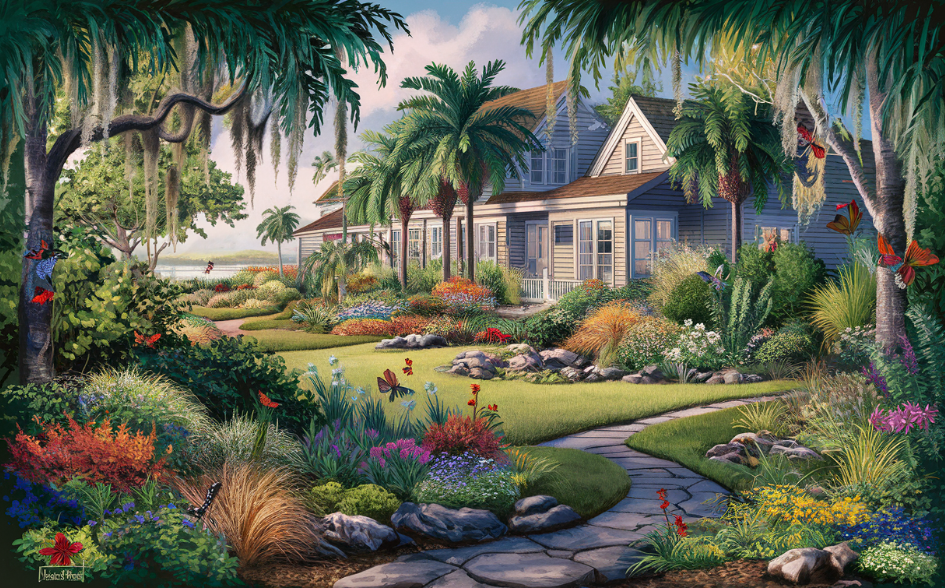
Key Takeaways
- Native plant landscaping uses plants naturally found in Hilton Head Island
- Benefits include low maintenance, water conservation, and wildlife support
- Popular native plants: palmetto trees, live oaks, and sea oats
- Proper planning and soil preparation are essential for success
- Native plants can be combined with hardscaping for a complete landscape design
Native plant landscaping is a smart and eco-friendly approach to beautifying your Hilton Head Island property. By using plants that naturally grow in our local environment, you can create a stunning landscape that's easy to maintain and supports local wildlife. Let's dig into the details of how you can transform your yard with native plants.
Understanding Native Plant Landscaping
Native plant landscaping involves using plants that have grown naturally in the Hilton Head Island area for thousands of years. These plants are perfectly adapted to our local climate, soil conditions, and wildlife. They've evolved to thrive in our unique coastal environment without needing much help from us.
When you choose native plants for your landscape, you're not just creating a beautiful yard. You're also helping to preserve the natural heritage of Hilton Head Island. Native plants play a crucial role in supporting local ecosystems and providing food and shelter for birds, butterflies, and other wildlife.
The Benefits of Native Plant Landscaping
There are many reasons to choose native plants for your Hilton Head Island landscape. Here are some of the top benefits:
Low Maintenance
Native plants are already adapted to our local conditions. This means they need less watering, fertilizing, and pest control than non-native species. Once established, they can often thrive with minimal care, saving you time and money on landscape maintenance.
Water Conservation
Our native plants are used to the amount of rainfall we get on Hilton Head Island. They don't need extra watering once they're established, which can significantly reduce your water usage. This is especially important during our hot, dry summers when water conservation becomes crucial.
Support for Local Wildlife
Native plants provide food and habitat for local birds, butterflies, and other wildlife. By incorporating these plants into your landscape, you're creating a mini-ecosystem that supports biodiversity right in your backyard.
Improved Soil Health
Many native plants have deep root systems that help prevent soil erosion. They also improve soil structure and fertility over time, which can benefit your entire landscape.
Natural Pest Resistance
Native plants have developed natural defenses against local pests and diseases. This means you'll likely have fewer pest problems and won't need to use as many chemical pesticides.
Popular Native Plants for Hilton Head Island Landscapes
Hilton Head Island has a rich variety of native plants that can beautify your landscape. Here are some popular choices:
Trees
- Live Oak: These majestic trees are iconic to Hilton Head Island. They provide shade and support a variety of wildlife.
- Palmetto Tree: Our state tree, the palmetto, is perfectly suited to our coastal environment.
- Southern Magnolia: Known for its large, fragrant flowers and glossy leaves.
Shrubs
- Wax Myrtle: An evergreen shrub that can be used as a natural hedge.
- Yaupon Holly: Produces red berries that attract birds.
- Beautyberry: Features clusters of purple berries in the fall.
Grasses and Ground Covers
- Sea Oats: Essential for dune stabilization and beautiful in landscaping.
- Muhly Grass: Produces stunning pink plumes in the fall.
- Beach Morning Glory: A fast-growing ground covered with purple flowers.
Flowers
- Black-eyed Susan: Bright yellow flowers that bloom throughout summer.
- Blanket Flower: Drought-tolerant with colorful daisy-like blooms.
- Coreopsis: Also known as tickseed, with cheerful yellow flowers.
Planning Your Native Plant Landscape
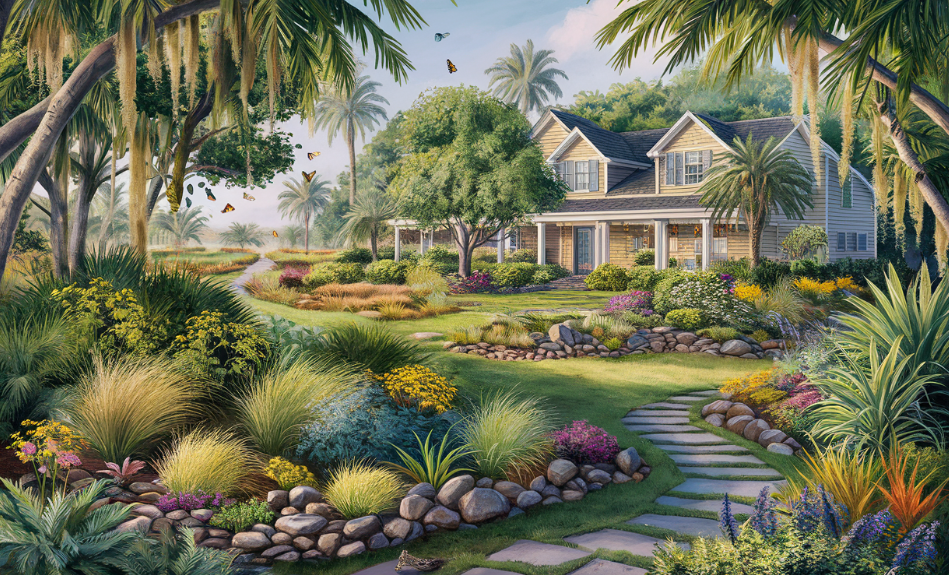
Creating a successful native plant landscape starts with good planning. Here's how to get started:
Assess Your Site
Take a close look at your property. Note areas of sun and shade, wet and dry spots, and any existing plants or structures. This will help you choose the right plants for each area.
Consider Your Goals
Think about what you want from your landscape. Are you looking for privacy, color, or wildlife attraction? Do you want a low-maintenance yard or a more formal garden look? Your goals will guide your plant choices.
Choose a Design Style
Native plants can work in any design style, from formal to naturalistic. Decide on a style that complements your home and personal taste.
Create a Plant List
Based on your site assessment, goals, and design style, create a list of native plants that will work well in your landscape. Consider factors like mature size, bloom time, and color when making your selections.
Plan for All Seasons
Choose a mix of plants that will provide interest throughout the year. This might include spring-blooming flowers, summer perennials, fall colors, and evergreens for winter interest.
Preparing Your Site for Native Plants
Proper site preparation is key to the success of your native plant landscape. Here's what you need to do:
Soil Testing
Start by testing your soil. This will tell you about its pH and nutrient content, helping you choose plants that will thrive in your specific conditions.
Soil Preparation
Many native plants prefer well-draining soil. If your soil is heavy clay, you might need to amend it with organic matter to improve drainage.
Removing Existing Vegetation
If you're converting a lawn or garden to native plants, you'll need to remove the existing vegetation. This can be done through methods like solarization or sheet mulching.
Weed Control
Controlling weeds before planting will give your native plants the best chance to establish themselves. Use mulch to suppress weeds and retain moisture.
Planting and Caring for Native Plants
Once your site is prepared, it's time to plant. Here are some tips for successful planting and care:
Planting Techniques
Plant in the spring or fall when temperatures are milder. Dig holes twice as wide as the root ball but no deeper. Water thoroughly after planting.
Watering
While native plants are drought-tolerant once established, they'll need regular watering for the first growing season. Water deeply but less frequently to encourage deep root growth.
Mulching
Apply a 2-3 inch layer of mulch around your plants, keeping it away from the stems. This helps retain moisture and suppress weeds.
Pruning
Most native plants need minimal pruning. Remove dead or diseased branches as needed, and shape plants lightly to maintain their natural form.
Fertilizing
Native plants generally don't need much fertilizer. If you do fertilize, use a slow-release organic fertilizer in the spring.
Incorporating Hardscaping with Native Plants
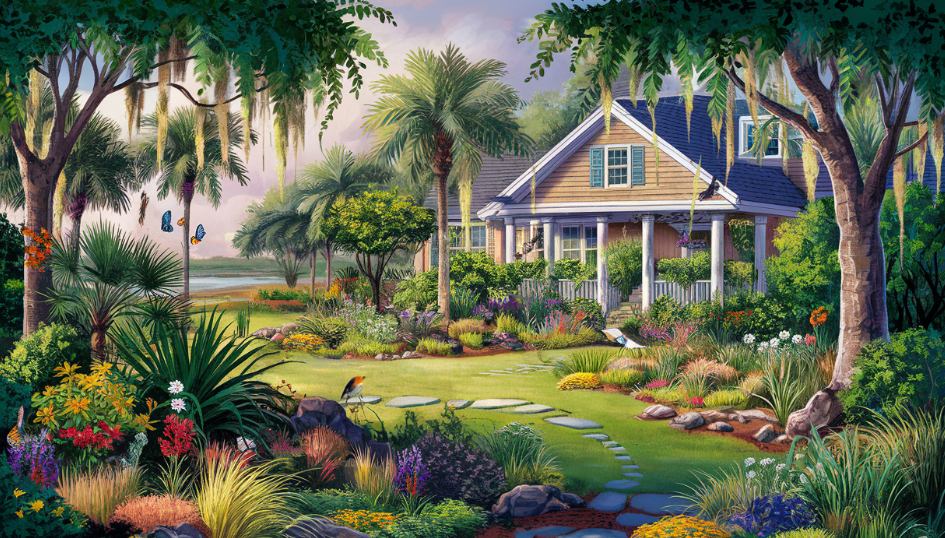
Hardscaping elements can complement your native plant landscape beautifully. Here are some ideas:
Pathways
Create natural-looking pathways using local materials like crushed oyster shells or pine straw.
Seating Areas
Incorporate seating areas where you can enjoy your native plant garden. Use materials that blend with the natural environment.
Water Features
Consider adding a small pond or water feature to attract wildlife and create a focal point in your landscape.
Retaining Walls
If your property has slopes, retaining walls can create terraces for planting while preventing erosion.
Native Plant Landscaping for Different Property Types
Native plant landscaping can work for any type of property on Hilton Head Island. Here's how:
Beachfront Properties
For beachfront homes, focus on salt-tolerant natives like sea oats, beach elder, and yucca. These plants can help stabilize dunes and withstand harsh coastal conditions.
Wooded Lots
If you have a wooded property, work with the existing tree canopy. Use shade-loving natives like ferns and wild ginger as understory plants.
Golf Course Communities
In golf course communities, native plants can create beautiful, low-maintenance landscapes that blend with the natural surroundings.
Commercial Properties
Native plants can create attractive, low-maintenance landscapes for businesses, reducing water use and maintenance costs.
Overcoming Challenges in Native Plant Landscaping
While native plant landscaping has many benefits, it's not without challenges. Here are some common issues and how to address them:
Deer Resistance
Deer can be a problem on Hilton Head Island. Choose deer-resistant natives like yaupon holly, wax myrtle, and muhly grass.
Salt Tolerance
For properties near the ocean, salt spray can damage plants. Choose salt-tolerant natives for these areas.
Invasive Species Control
Be vigilant about removing invasive species that can outcompete native plants. Common invasives on Hilton Head include Chinese tallow and Japanese honeysuckle.
Educating Neighbors
Some people might view native plant landscapes as "messy." Educate your neighbors about the benefits of native plants and consider adding some formal elements to your design for a more manicured look.
Native Plant Resources for Hilton Head Island Residents
There are many resources available to help you with native plant landscaping:
Local Nurseries
Many local nurseries on Hilton Head Island specialize in native plants. They can provide expert advice and healthy, locally-grown plants.
Clemson Extension
The Clemson Extension office offers gardening advice and resources specific to our area.
Native Plant Society
The South Carolina Native Plant Society is a great resource for information on native plants and gardening techniques.
Local Garden Clubs
Joining a local garden club can provide opportunities to learn from experienced gardeners and see native plant landscapes in person.
Here's a list of steps to start your native plant landscape:
- Assess your property's conditions (sun, shade, soil type)
- Set your landscaping goals
- Research native plants suitable for your conditions
- Create a landscape design plan
- Prepare your site (soil testing, amendments if needed)
- Purchase plants from a reputable native plant nursery
- Plant according to best practices for each species
- Provide initial care (regular watering, mulching)
- Monitor and maintain your new native plant landscape
Source
- Native plant landscaping is an effective strategy for reducing water usage and promoting biodiversity. According to a study published in the Journal of Environmental Horticulture, landscapes with native plants require 30-70% less irrigation than non-native landscapes (source).
- Another study published in the Restoration Ecology journal found that native plant landscapes provide important habitat for local wildlife. The study found that native plant species were more likely to be used by native bees, butterflies, and beetles than non-native species (source).
- To create an effective native plant landscape, consider the following strategies:
- Choose plants that are native to your region or specific ecosystem. This will ensure that the plants are well-adapted to the local climate and soil conditions (source).
- Group plants according to their water requirements. This will help reduce water usage and ensure that each plant receives the appropriate amount of water (source).
- Include a diversity of plant species. This will provide habitat for a wider range of wildlife and promote biodiversity (source).
Native plant landscaping offers a beautiful, sustainable way to enhance your Hilton Head Island property. By choosing plants that naturally thrive in our unique coastal environment, you can create a landscape that's not only stunning but also supports local wildlife and requires less maintenance.
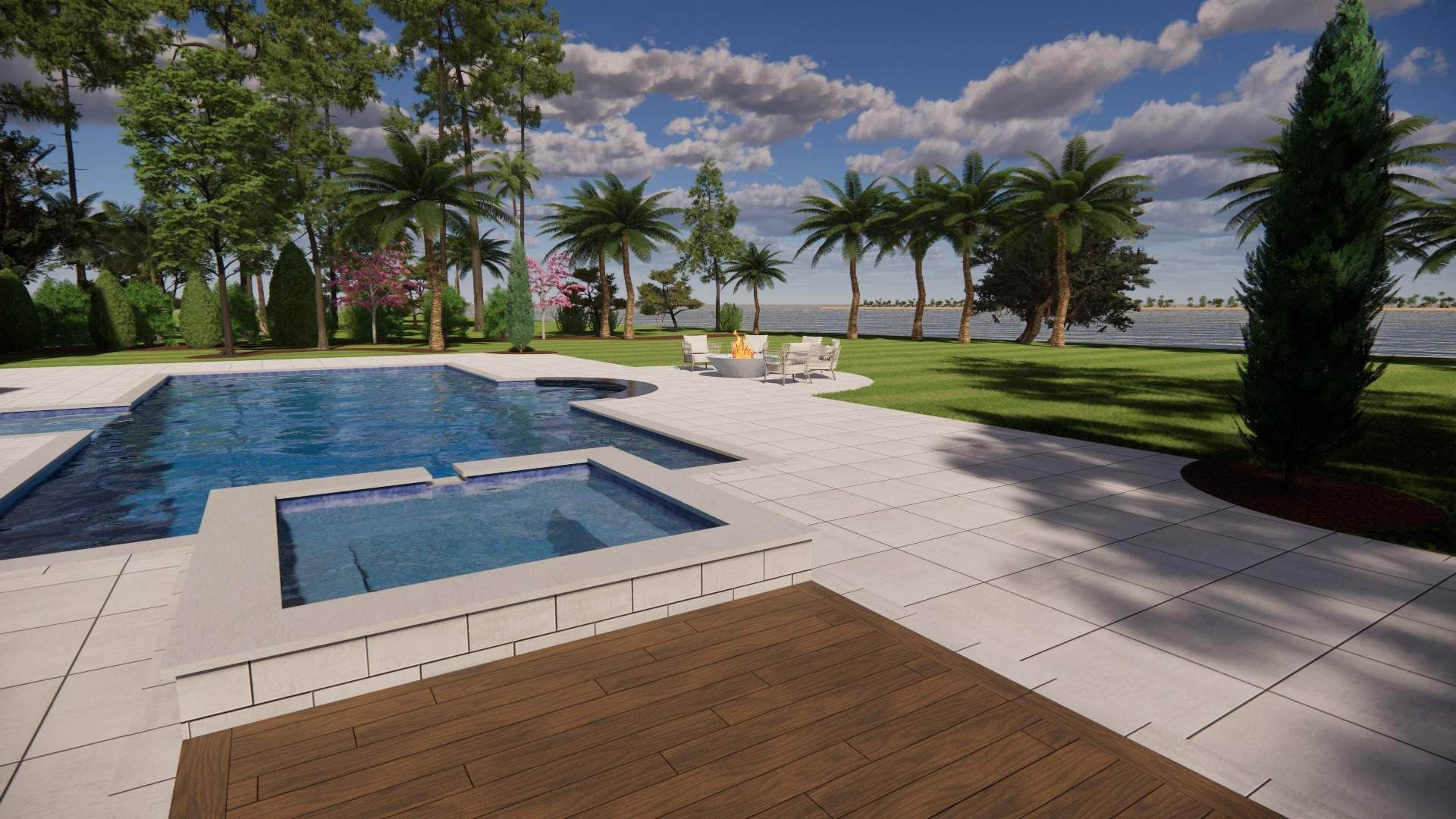
HOURS OF OPERATION:
- Mon - Fri
- -
- Sat - Sun
- Closed
All Rights Reserved | Hilton Head Landscapes | Website Created by: Kickstart Local
